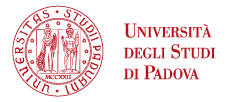An introduction to Functional Near Infrared Spectroscopy principles and data analysis
This course will be taught in english
Conduttore: Jessica Gemignani
Periodo previsto: dal 24 al 28 novembre 2025
lunedì 24-11-2025 ore 13:00 - 17:00;
martedì 25-11-2025 ore 13:00 - 17:00;
mercoledì 26-11-2025 ore 13:00 - 17:00;
giovedì 27-11-2025 ore 13:00 - 17:00;
venerdì 28-11-2025 ore 13:00 - 17:00;
L'iscrizione al corso sarà possibile dal 10 novembre alle 9 al 14 novembre alle 14 a questo link
A fine corso è prevista l'erogazione dell'Open Badge da parte dell'Università di Padova: https://bestr.it/badge/show/4506
Functional Near Infrared Spectroscopy (fNIRS) is a relatively young technique that is increasingly used in cognitive neuroscience due to its versatility. It can be used with different populations, is more tolerant to motion than other neuroimaging techniques, is portable, and is not invasive.
While the field is evolving fast, fNIRS data analysis must still be standardised and requires some expertise. This course will introduce the fNIRS technique's principles and signal processing concepts necessary for properly planning an fNIRS experiment and analysing the data. In particular, the course will cover the preprocessing steps required to obtain the hemodynamic response functions from the recorded changes in light intensity with the removal of different noise sources. During the course, we will analyse a dataset by implementing different preprocessing strategies while discussing advantages, disadvantages, and theoretical considerations. All the material for the course will be available online.
Different open-source packages are available for analysing fNIRS data, almost all implemented in MATLAB. During the course, we will focus on Homer3, a MATLAB package openly available online, one of the community's most used packages. Nevertheless, the conceptual consideration and algorithms learned during the course can be easily extrapolated to other software.
Program:
- An introduction to fNIRS, fNIRS files, and the MATLAB language and environment
- Perform a basic analysis using the Homer3 GUI
- Write your scripts using Homer3 processing functions
- Dealing with instrumental noise and motion artefacts
- Dealing with physiological artefacts and running a Generalized Linear Model





